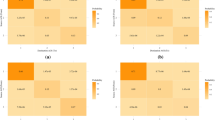Abstract
Alarms in industrial control rooms are defined by their ability to alert an operator of abnormal events that require prompt response. However, when vigilant, operators may anticipate upcoming alarms, rendering those alarms less informative if not a nuisance. Three gaze-based alarm acknowledgement methods were designed by estimating operator awareness based on their eye fixations on the parameter/area of interest and parameter behavior shortly before the alarm. The three designs differed in acknowledging the types of parameter behaviors, which could be: a) near the alarm threshold, b) fluctuating drastically, or c) trending towards an alarm threshold. These three parameter behaviors correlate with increased visual sampling, which suggests higher operator awareness or expectation of alarms. In a simulator study comparing the three gaze-based acknowledgement methods against no gaze acknowledgement, 24 participants completed 24 trials of alarm monitoring task while maintaining a single parameter within a predefined range. Analysis of variance revealed that usability ratings were higher for conditions with than without gaze acknowledgements, demonstrating promise for this alarm management approach.
Access this chapter
Tax calculation will be finalised at checkout
Purchases are for personal use only
Similar content being viewed by others
References
Seagull, F.J., Xiao, Y., Mackenzie, C.F., Wickens, C.D.: Auditory alarms: from alerting to informing. In: Proceedings of the Human Factors and Ergonomics Society Annual Meeting, pp. 223–226. Sage, Los Angeles (2000). https://doi.org/10.1177/154193120004400160
Meyer, J., Bitan, Y.: Why better operators receive worse warnings. Hum. Factors 44(3), 343–353 (2002). https://doi.org/10.1518/0018720024497754
Lee, M.N., Lees, J.D.: The influence of distraction and driving context on driver response to imperfect collision warning systems. Ergonomics 50(8), 1264–1286 (2007). https://doi.org/10.1080/00140130701318749
Wickens, C.D., Rice, S., Keller, D., Hutchins, S., Hughes, J., Clayton, K.: False alerts in air traffic control conflict alerting system: is there a “cry wolf” effect? Hum. Factors 51(4), 446–462 (2009). https://doi.org/10.1177/0018720809344720
Wickens, C.D., Helton, W.S., Hollands, J.G., Banbury, S.: Engineering Psychology and Human Performance. 4th edn. Pearson (2013). https://doi.org/10.4324/9781003177616
Carrasco, M.: Visual attention: the past 25 years. Vision. Res. 51(13), 1484–1525 (2011). https://doi.org/10.1016/j.visres.2011.04.012
Majaranta, P., Bulling, A.: Eye tracking and eye-based human–computer interaction. In: Advances in Physiological Computing, pp. 39–65. Springer, London (2014). https://doi.org/10.1007/978-1-4471-6392-3_3
Vertegaal, R., Shell, J.S., Chen, D., Mamuji, A.: Designing for augmented attention: towards a framework for attentive user interfaces. Comput. Hum. Behav. 22(4), 771–789 (2006). https://doi.org/10.1016/j.chb.2005.12.012
Hasse, C., Grasshoff, D., Bruder, C.: How to measure monitoring performance of pilots and air traffic controllers. In: Proceedings of the Symposium on Eye Tracking Research and Applications, pp. 409–412. ACM, New York (2012). https://doi.org/10.1145/2168556.2168649
Poole, A., Ball, L.J.: Eye tracking in HCI and usability research. In: Ghaoui, C. (ed.) Encyclopedia of Human Computer Interaction, pp. 211–219. IGI global (2006). https://doi.org/10.4018/978-1-59140-562-7.ch034
Salvucci, D.D., Goldberg, J.H.: Identifying fixations and saccades in eye-tracking protocols. In: Proceedings of the 2000 Symposium on Eye Tracking Research and Applications, pp. 71–78. ACM, New York (2000). https://doi.org/10.1145/355017.355028
Lethaus, F., Harris, R.M., Baumann, M.R.K., Köster, F., Lemmer, K.: Windows of driver gaze data: how early and how much for robust predictions of driver intent? In: Tomassini, M., Antonioni, A., Daolio, F., Buesser, P. (eds.) ICANNGA 2013. LNCS, vol. 7824. Springer, Heidelberg (2013). https://doi.org/10.1007/978-3-642-37213-1
Crossman, E.R.F.W., Cooke, I.E., Beishan, R.J.: Visual Attention and the Sampling of Displayed Information in Process Control. The Human Operator in Process Control. Taylor and Francis, New York (1974)
Kvålseth, T.O.: A decision-theoretic model of the sampling behavior of the human process monitor: experimental evaluation. Hum. Factors 21(6), 671–686 (1979). https://doi.org/10.1177/001872087912210605
de Jong, J., Koster, E.P.: The human operator in the computer-controlled refinery. In: 8th World Petroleum Congress. OnePetro, Moscow (1971)
Patternote, P.H.: The control performance of operators controlling a continuous distillation process. Ergonomics 21(9), 671–679 (1978). https://doi.org/10.1080/00140137808931769
Vicente, K.J., Roth, E.M., Mumaw, R.J.: How do operators monitor a complex, dynamic work domain? The impact of control room technology. Int. J. Hum. Comput. Stud. 54(6), 831–856 (2001). https://doi.org/10.1006/ijhc.2001.0463
Sheridan, T.B.: On how often the supervisor should sample. IEEE Trans. Syst. Sci. Cybern. 6(2), 140–145 (1970). https://doi.org/10.1109/TSSC.1970.300289
Kvålseth, T.O.: Human information processing in visual sampling. Ergonomics 21(6), 439–454 (1978). https://doi.org/10.1080/00140137808931741
Bitan, Y., Meyer, J.: Self-initiated and respondent actions in a simulated control task. Ergonomics 50(5), 763–788 (2007). https://doi.org/10.1080/00140130701217149
Hall, P., Morton, S.C.: On the estimation of entropy. Ann. Inst. Stat. Math. 45(1), 69–88 (1993). https://doi.org/10.1007/BF00773669
Wallis, K.: A note on the calculation of entropy from histograms (2006)
Burns, C.M., Hajdukiewicz, J.: Ecological Interface Design. CRC Press (2004)
Robinson, D.N.: Visual discrimination of temporal order. Science 156(3779), 1263–1264 (1967). https://doi.org/10.1126/science.156.3779.1263
Eisma, Y.B., Cabrall, C.D., de Winter, J.C.: Visual sampling processes revisited: replicating and extending Senders (1983) using modern eye-tracking equipment. IEEE Trans. Hum. Mach. Syst. 48(5), 526–540 (2018). https://doi.org/10.1109/THMS.2018.2806200
Herdt, K.E.: Using Eye-tracking to Acknowledge Attended Alarms. Master Thesis, Virginia Tech (2022)
Bradley, J.V.: Robustness? Br. J. Math. Stat. Psychol. 31(2), 144–152 (1978). https://doi.org/10.1111/j.2044-8317.1978.tb00581.x
Blanca Mena, M.J., Alarcón Postigo, R., Arnau Gras, J., Bono Cabré, R., Bendayan, R.: Non-normal data: Is ANOVA still a valid option? Psicothema 29(4), 552–557 (2017). https://doi.org/10.7334/psicothema2016.383
Acknowledgements
We thank Dr. Charlie Klauer for her feedback on our research. We also thank Frank Chen, Junjie Liu, and Tianzi Wang in supporting data collection and software development.
Author information
Authors and Affiliations
Corresponding author
Editor information
Editors and Affiliations
Rights and permissions
Copyright information
© 2022 The Author(s), under exclusive license to Springer Nature Switzerland AG
About this paper
Cite this paper
Herdt, K., Lau, N., Hildebrant, M., Le, T., LeBlanc, K. (2022). Design of Gaze-Based Alarm Acknowledgement by Parameter Characteristics. In: Stephanidis, C., Antona, M., Ntoa, S. (eds) HCI International 2022 Posters. HCII 2022. Communications in Computer and Information Science, vol 1580. Springer, Cham. https://doi.org/10.1007/978-3-031-06417-3_9
Download citation
DOI: https://doi.org/10.1007/978-3-031-06417-3_9
Published:
Publisher Name: Springer, Cham
Print ISBN: 978-3-031-06416-6
Online ISBN: 978-3-031-06417-3
eBook Packages: Computer ScienceComputer Science (R0)




